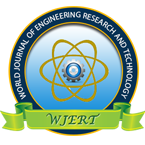| All | Since 2020 | |
| Citation | 172 | 110 |
| h-index | 7 | 5 |
| i10-index | 1 | 0 |
WJERT Citation 
Login
News & Updation
Abstract
SPATIOTEMPORAL DISTRIBUTION PATTERNS OF THE DENGUE EPIDEMIC IN THE BADULLA DIVISIONAL SECRETARIAT DIVISION OF SRI LANKA
Senanayaka S.M.N.S.* and Ranasinghe E.M.S.
ABSTRACT
Dengue is the most rapidly emerging mosquito-born viral infection in tropical and sub-tropical countries, including Sri Lanka. Accordingly, this study aimed to analyze the spatiotemporal distribution patterns of the dengue epidemic in the Badulla Divisional Secretariat Division (DSD) in the Badulla district of Sri Lanka. Both primary and secondary data were used for the study. Primary data were collected from 102 dengue-affected families in the DSD for the year 2019. Dataon the reported dengue cases in the study area was obtained from the secondary sources of the Medical Officer of Health (MOH) in Badulla for the years 2015-2019. ArcGIS 10.1 software was used to portray the spatial and temporal distribution of the dengue epidemic in the study area. The Average Nearest Neighbour Analysis method and Kernel Density Estimation were applied to analyze the spatiotemporal distribution patterns of the dengue epidemic in the study area. Results of the study showed that the dengue epidemic is widely recorded in the urban divisions of the study area, including Higurugamuwa, Badulla Central, Badulla South, Badulla East, and Badulupitiya, which represent 70% of the dengue cases. Among them, the Higurugamuwa division is reported as having the highest number of dengue cases in the years 2017, 2018, and 2019. The spatial distribution of the dengue cases in 2019 showed a clustered pattern in the western half of the study area, which represents the urban GNDs, that are accompanied by a high population. The study further revealed that the hotspots of the epidemic are mainly concentrated in the northwestern and southwestern parts of the study area. Finally, the study suggested that high population and improper solid waste disposal methods in the urban segment are the major factors of the vulnerability of the dengue epidemic in the Badulla DSD, therefore vigorous prevention actions should be taken to eliminate mosquito breeding sites, especially for the municipal council area.
[Full Text Article] [Download Certificate]
